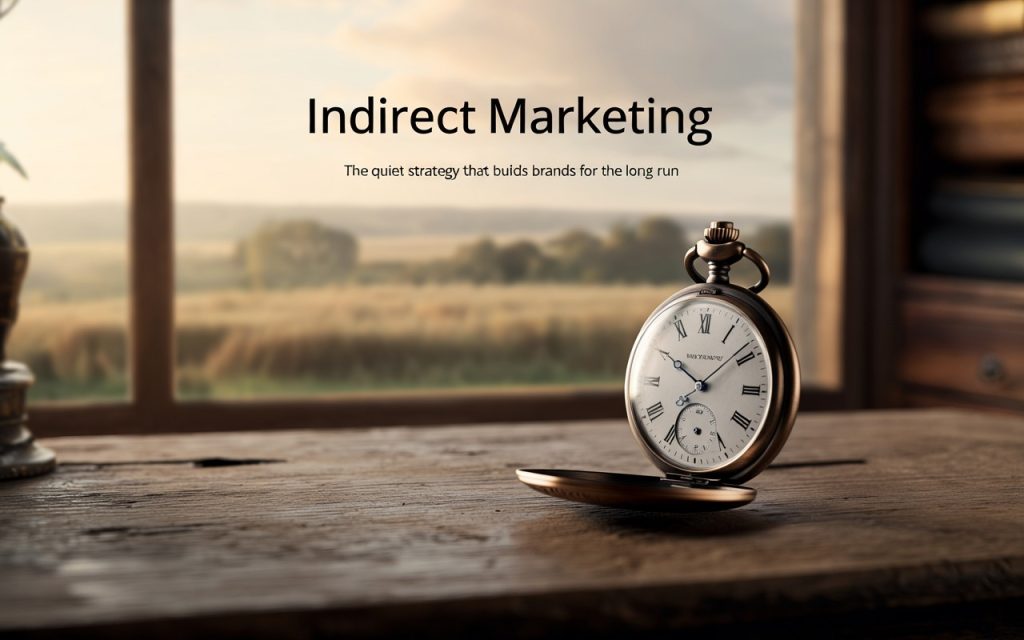If you’ve ever bought a product after reading a blog, watching a YouTube review, or hearing a friend recommend it, congratulations, you’ve been influenced by indirect marketing.
Unlike flashy ads or pushy sales emails, indirect marketing doesn’t demand attention. It earns it.
In this article, we’ll break down what indirect marketing is, how it works in today’s digital landscape, and why companies — especially in performance marketing — are doubling down on this subtle but powerful strategy. And yes, we’ll show how tools like Trackier help make it trackable and scalable.
So, What is Indirect Marketing?
Indirect marketing refers to promotional activities that don’t directly ask the customer to make a purchase. Instead, it focuses on delivering value, education, entertainment, or trust, which gradually nudges a potential buyer toward conversion.
Think of it like dating before proposing. You build a relationship, get to know the other person, and gain their trust before asking for commitment.
Here are some real-life examples:
- A SaaS brand publishing blogs that solve industry-specific problems
- An e-commerce site working with influencers to create authentic product reviews
- A fintech company earning coverage in business publications
- A B2B startup hosting podcasts with industry experts
None of these asks the reader to buy immediately. But they shape perception, plant a seed, and lead to future action.
Why Indirect Marketing is Winning in 2025?
Today’s audiences are savvier than ever. They’ve grown numb to banner ads and skeptical of bold claims. People want to discover, not be sold to.
Here’s why indirect marketing is especially powerful now:
1. People Trust People, Not Ads
According to Nielsen, 92% of consumers trust recommendations from people they know over any form of advertising. That’s a strong case for influencer marketing, affiliate referrals, and user-generated content.
2. Buyers Do Their Homework
Whether it’s a marketing manager evaluating a SaaS tool or a customer buying a skincare product, people research before buying. Blogs, social proof, YouTube walkthroughs — all forms of indirect marketing — help shape those decisions.
3. It Has a Longer Shelf Life
A well-written blog or evergreen video can bring leads for months or years. Direct ads stop the moment you stop paying.
4. It Feeds Every Stage of the Funnel
Indirect marketing attracts awareness, builds interest, and fosters loyalty, not just conversions. It’s holistic by nature.
Let’s Clear the Confusion: Indirect vs Direct Marketing
To illustrate the difference, let’s say you’re a software company.
- Direct marketing is sending an email that says: “Book a demo now — limited time offer!”
- Indirect marketing is publishing a blog on “How to improve partner marketing attribution” and including your tool in the solution.
Same audience, two very different tones. The second approach builds trust first and converts over time.
Where Does Trackier Fit In?
Here’s the thing: indirect marketing is often harder to measure. You’re not getting an immediate click or form fill — you’re building momentum across touchpoints. But performance still matters.
That’s why platforms like Trackier are game-changers. Trackier helps businesses:
- Track the entire user journey, even when it starts on a blog or influencer page.
- Manage partner and affiliate programs with real-time reporting and transparent payouts.
- Use SmartLinks to guide users based on behavior, location, or device, without needing 5 versions of a link.
- Prevent fraud in influencer or affiliate campaigns (yes, fake traffic is still a thing).
- Attribute revenue accurately to the right sources — whether it’s a LinkedIn post or a podcast shoutout
So even when you’re playing the long game, you still know what’s working and what’s not.
Real Examples of Indirect Marketing in Action
Let’s ground this with a few real-life use cases:
1. B2B SaaS: Trackier’s Own Customers
One Trackier client — a large ad network — scaled their affiliate partnerships by 60% using indirect marketing channels like referral blogs and content collaborations. With Trackier’s tracking dashboard, they could see which partners were bringing in quality traffic and optimize payouts accordingly.
2. DTC Brand: Influencer Reviews
A skincare brand partnered with 30 micro-influencers on Instagram. The campaign didn’t push discounts — just authentic skincare routines. Sales rose by 18% over 60 days. Trackier helped attribute those sales to specific influencers, even when conversions happened a week later.
3. eLearning Startup: SEO & Content
An edtech brand published guides like “How to Prepare for IELTS in 30 Days.” These were top-of-the-funnel blogs — no call-to-action to buy. But over time, those posts became their biggest traffic drivers. Using Trackier, they set up affiliate links with education counselors, generating leads passively.
How to Start with Indirect Marketing (If You’re New)?
You don’t need to overhaul your entire marketing plan. Start small:
- Invest in SEO Content
Identify 5-10 core pain points your audience has. Create blogs, guides, or videos around them. - Launch a Partner Program
Invite affiliates, resellers, or satisfied customers to share your product and earn a commission. Tools like Trackier make this easy to manage. - Leverage Social Proof
Collect testimonials. Turn success stories into mini case studies or LinkedIn posts. - Collaborate with Niche Influencers
Not celebrities — creators with authentic audiences in your niche. Even 2–3 can create a serious impact. - Measure Everything
Use UTMs, partner dashboards, and attribution tools (yes, like Trackier!) to understand what’s moving the needle.
Final Thoughts
Direct marketing may win the sprint, but indirect marketing wins the marathon.
In an era of noisy ads and attention overload, trust and relevance are your best assets. Indirect marketing builds both.
But strategy alone isn’t enough. You need visibility into what’s working — and that’s where platforms like Trackier can be your secret weapon. From managing influencer partnerships to attributing conversions, Trackier ensures your indirect efforts lead to measurable, scalable outcomes.
Ready to play the long game? Indirect marketing isn’t just a tactic. It’s a mindset shift — and one worth making.

